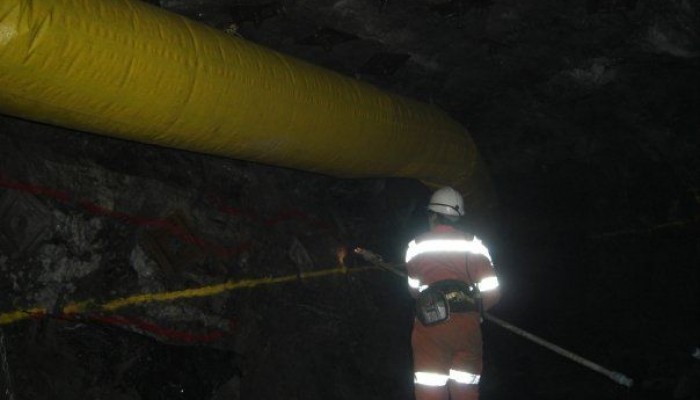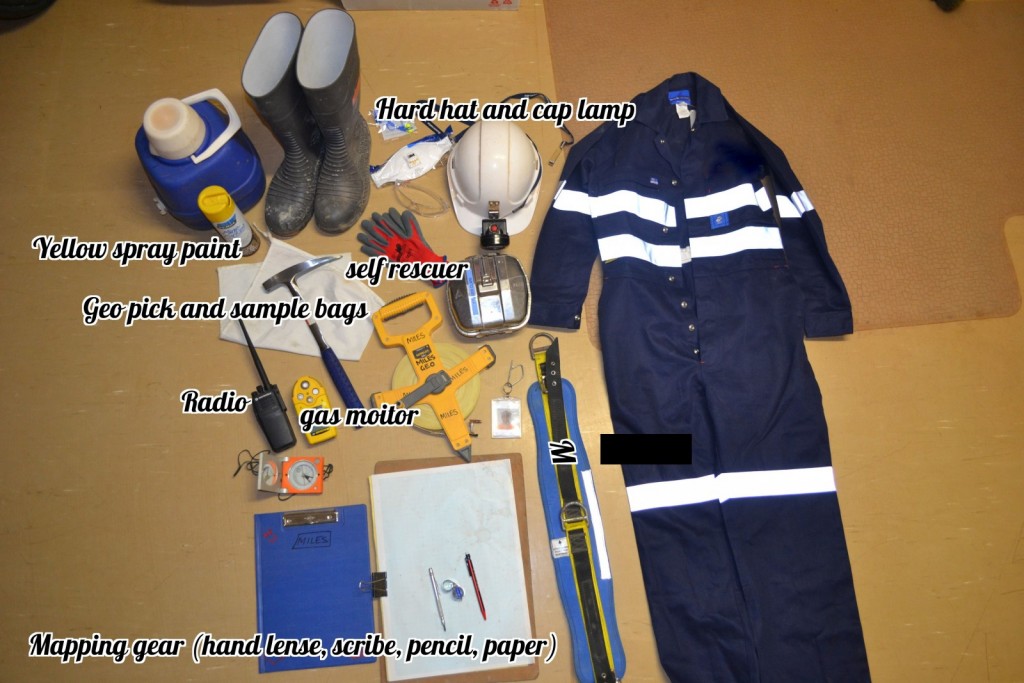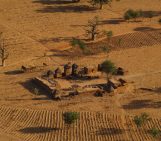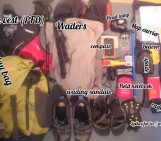
Inspired by a post on Lifehacker on what your average geologist carries in their rucksack/backpack, we’ve put together a few blog posts showcasing what a range of our EGU members carry in their bags whilst in the field!
Of course, it’s not only research geoscientists who carry kit! Earth scientists in industry often require a number of tools to carry out their daily duties. Today we feature the contents of Dave Perkin’s bag, a mining geologist working in a gold mine in Western Australia. In Dave’s bag, equipment to keep him safe in as he works in the depths of the Earth is almost as important as the tools he needs to fulfill his technical duties.
This bag belongs to:
Dave
Field Work location:
Underground gold mine, Western Australia
Duration of field work:
Continuous. I am employed full time to work at the mine as an Exploration Geologist.
What does your work entail?:
In order to keep producing gold the Exploration team must continually find new sources of gold to replenish what is mined. In order to do that we utilise diamond drill rigs and part of our job is managing these rigs to ensure we are drilling the most prospective areas. We also perform mapping in the underground environment – similar to surface mapping but in a much more confined space with limited exposure. In the average week we might spend a couple of days underground depending on what work needs to be done. Production geologists will spend ~6-7 hours per day underground performing their duties, such as mapping and sampling development faces and making ore/waste calls to ensure material is moved to the correct locations.
The main tasks for an exploration geologist is collating all the data available (diamond drill core logging, gold assays, underground mapping, etc.) and interpreting the mineralised domains to produce further exploration targets and mineable areas to produce gold. We will generally drill and interpret areas ~18 months before they are mined so we look at the big picture and long term goals.

The contents of Dave’s field bag. Safety underground is paramount! That’s why Dave’s most treasured items include his safety equipment.
The one item I couldn’t live without:
As the mine is active we have to carry a lot of safety equipment and protective clothing. Reflective stripes on all clothes are essential as there is no natural light within the mine and this allows heavy machinery to see us when we are on foot. All personal protective equipment is required by law to be carried everywhere when underground. Two essentials are a cap lamp and hard hat (to see anything) and a self-rescuer (this is a self-contained emergency oxygen system which will provide oxygen in the event of a fire/other emergency and will last long enough to get to safety).
Aside from the legal things, the most essential item is probably spray paint. If time is limited then we will paint around interesting structures so that the surveyors can measure them and put them into 3D for interpretation. As a bare minimum, this will allow you to begin your interpretation.
If you’ve been on field work recently, or work in an industry that requires you to carry equipment, and would like the contents of your bag to feature on the blog, we’d love to hear from you. Please contact the EGU’s Communication Officer, Laura Roberts (networking@egu.eu)





Pingback: GeoLog | Earth Science Week 2020: Earth Materials in Our Lives - an A-Z! - GeoLog
russell
What type (ie company name) of compass and gas moitor are those that are shown.